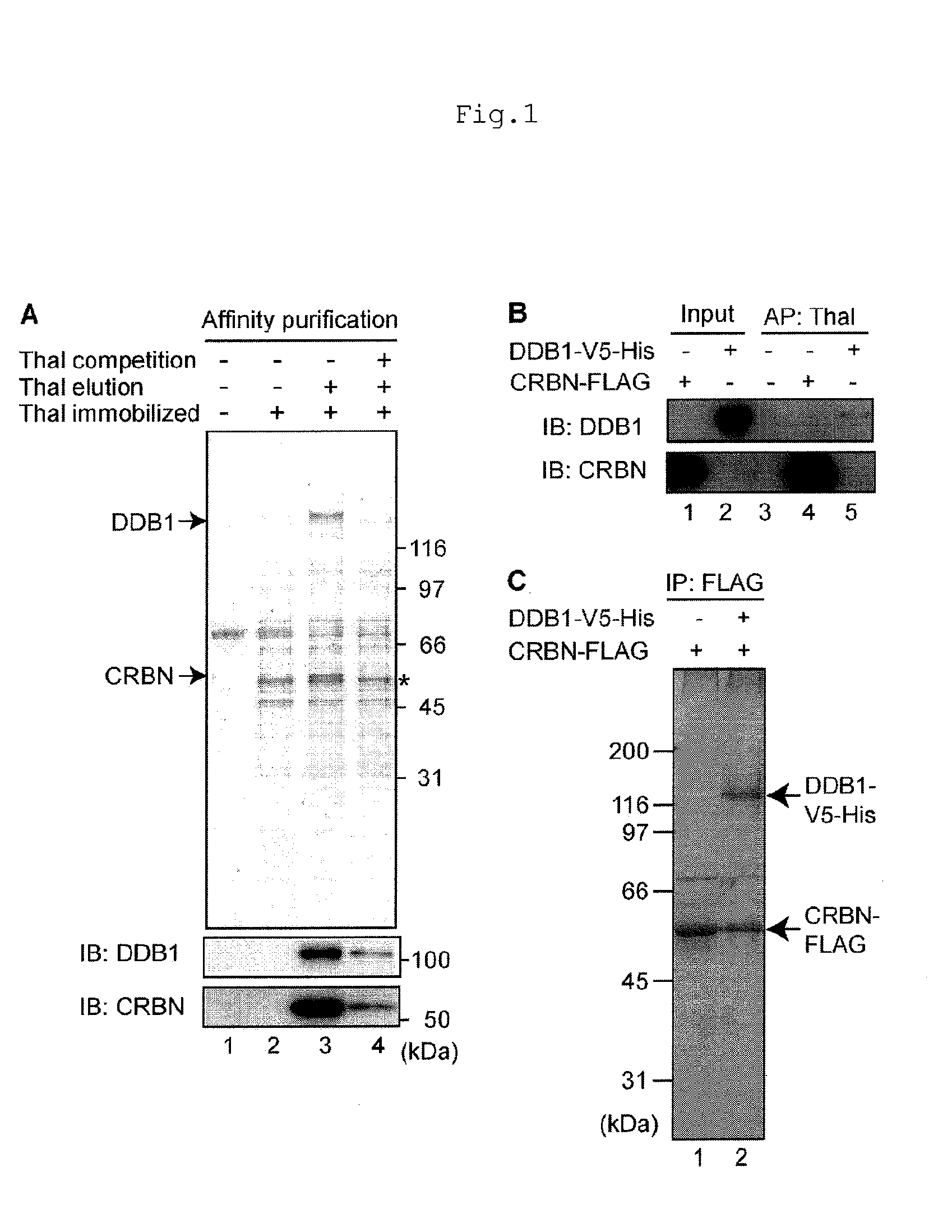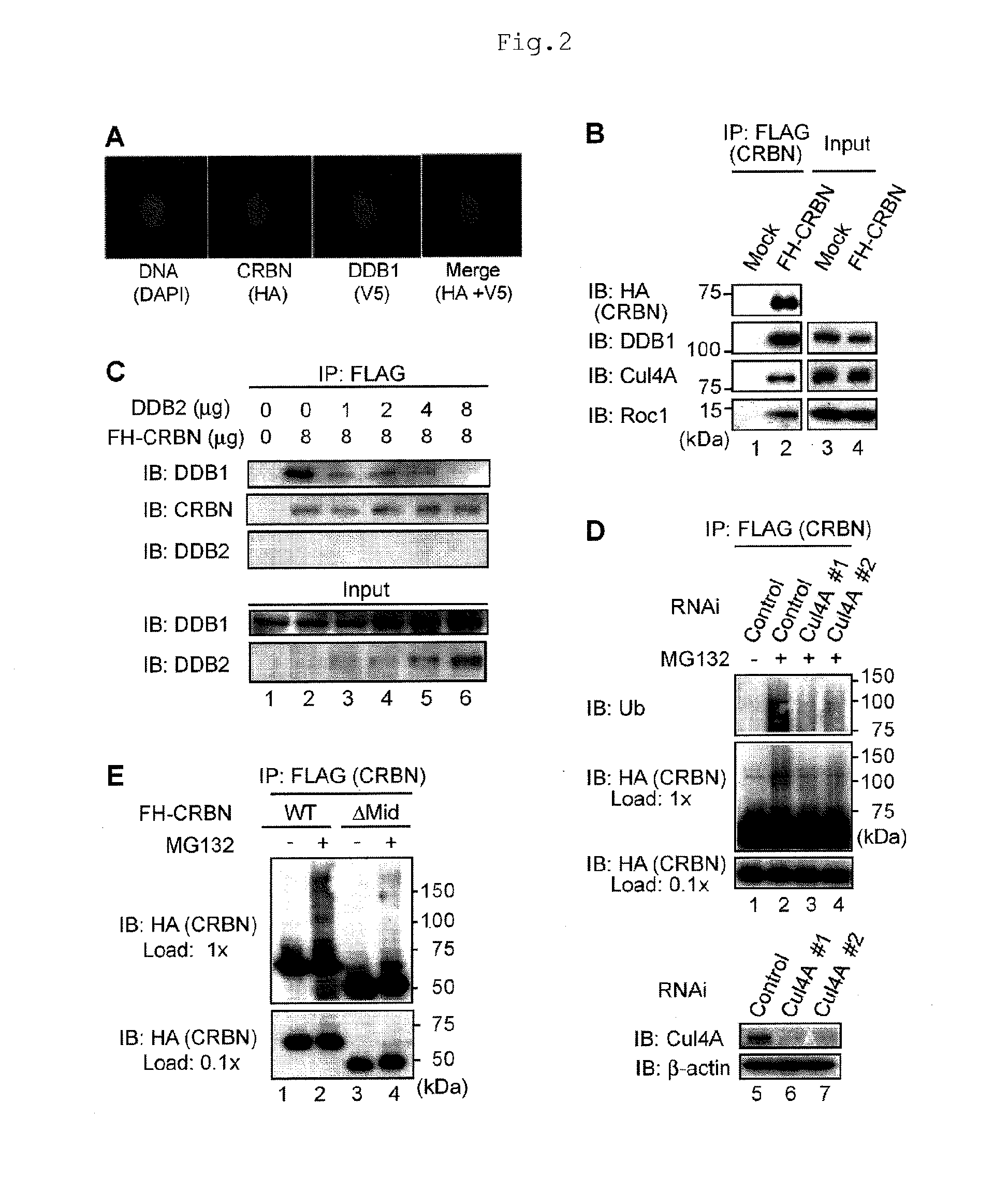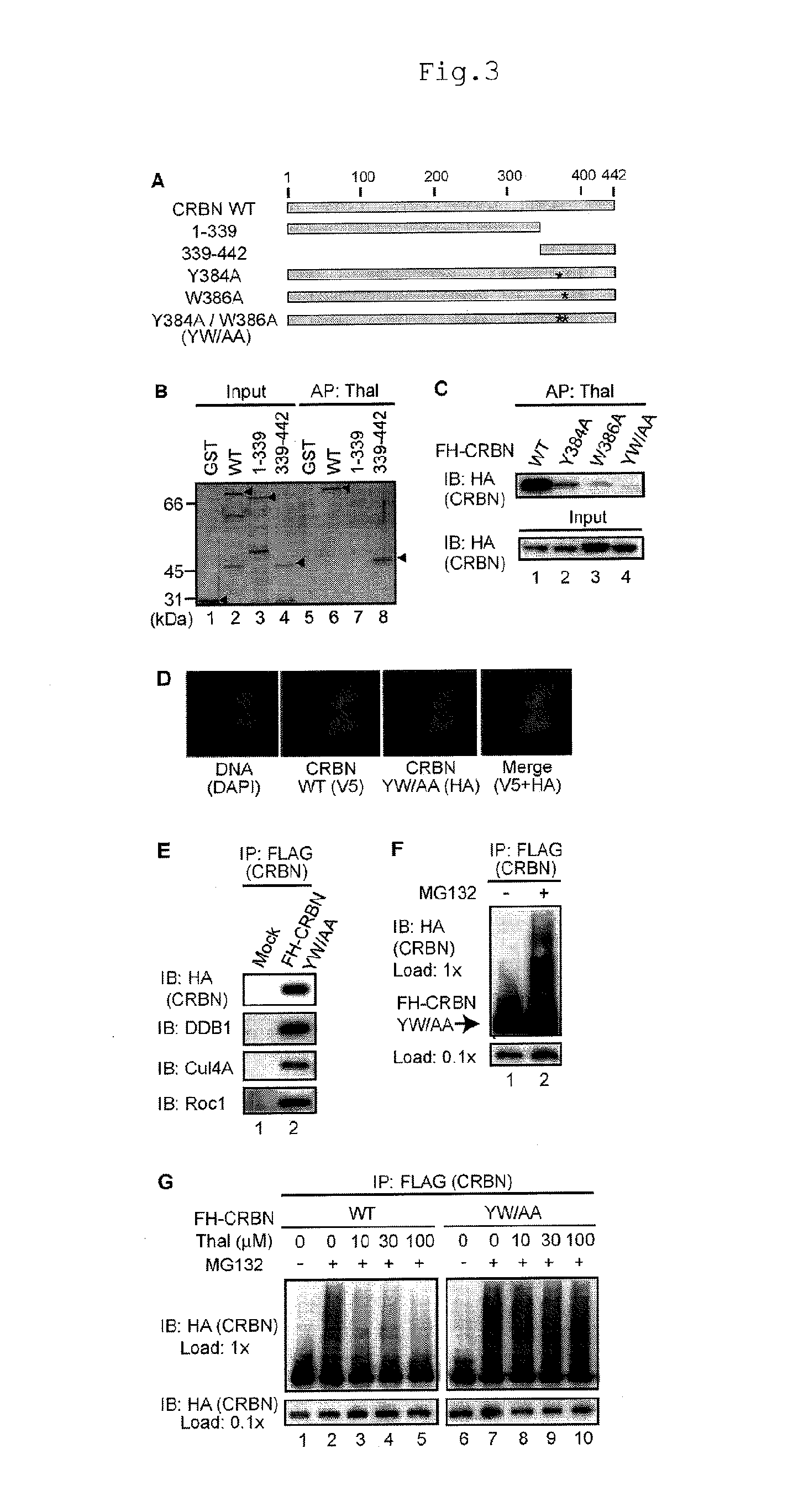Screening method utilizing thalidomide-targeting factor
a thalidomide and target factor technology, applied in the field of nonteratogenic substances, can solve the problems of frequent limb and ear malformations, unanswered questions, and little information about how these developmental defects are induced, and achieve the effect of reducing the teratogenic risk of thalidomid
- Summary
- Abstract
- Description
- Claims
- Application Information
AI Technical Summary
Benefits of technology
Problems solved by technology
Method used
Image
Examples
example 1
Bind Ability of Thalidomide with CRBN and DDB1
[0078]To purify thalidomide-binding proteins, the present inventors performed affinity purification using FG beads, which are magnetic particles (Cited Literature 9). FR259625, a thalidomide derivative in which a carboxyl group is added was covalently immobilized on the FG beads (FIG. 6), and mixed and incubated with human HeLa cell extracts. Subsequently, the beads were washed, and the binding proteins were selectively eluted with free thalidomide, and the eluate fractions were analyzed by SDS-PAGE and silver staining. As a result, two proteins of 127 kDa and 55 kDa were found to be specifically eluted (FIG. 1A, Lane 3). When free thalidomide was added to extracts prior to mixing with the beads, the yields of these proteins obtained by affinity purification were reduced significantly (FIG. 1A, Lane 4), suggesting that these proteins specifically bind to thalidomide. The 127 and 55 kDa proteins were analyzed by mass spectrometry and iden...
example 2
Formation of an E3 Complex by CRBN, DDB1 and Cul4A
[0079]Human CRBN was originally reported as a candidate gene for autosomal recessive mild mental retardation (Cited Literature 11), and encodes a 442-amino acid protein. This protein is evolutionarily well conserved from plants to humans. Although CRBN was reported to bind to DDB1 in a recent proteomic analysis (Cited Literature 12), the functional interaction was unclear, and the biological functions of CRBN are largely unknown.
[0080]Initially, the present inventors carried out biochemical analysis to investigate the effects of thalidomide on CRBN functions. First, 293T cells stably expressing FH-CRBN was prepared, and extracts of the cells were subjected to immunoaffinity purification using anti-FLAG antibody to elucidate CRBN-binding proteins. Silver staining of the purified product revealed that CRBN binds to DDB1 at a mole ratio of nearly 1:1 (FIG. 8). Immunostaining (FIG. 2A) revealed that CRBN and DDB1 are colocalized mainly i...
example 3
Inhibition of CRBN Function by Thalidomide
[0084]In order to elucidate the molecular basis of the CRBN-thalidomide interaction and its functional significance, the present inventors attempted to obtain a CRBN point mutant that does not bind to thalidomide, but is assembled into a functional E3 complex. First, thalidomide-binding region was investigated by using the N-terminal and C-terminal deletion mutants. As a result, it was revealed that the thalidomide-binding region was the C-terminal 104 amino acids (FIGS. 3A and B). Homology analysis of numerous CRBN homologs from Arabidopsis thaliana to humans showed that the C-terminal region was highly conserved (FIG. 12). Assuming that evolutionarily well conserved residue may be important for thalidomide binding, several point mutants were constructed, and two point mutants, Y384A and W386A, were found to be defective for thalidomide binding (FIG. 3C). Moreover, Y384A / W386A (a mutant called CRBN YW / AA, in which two residues were simultan...
PUM
| Property | Measurement | Unit |
|---|---|---|
| particle diameter | aaaaa | aaaaa |
| particle diameter | aaaaa | aaaaa |
| pH | aaaaa | aaaaa |
Abstract
Description
Claims
Application Information
 Login to View More
Login to View More - R&D
- Intellectual Property
- Life Sciences
- Materials
- Tech Scout
- Unparalleled Data Quality
- Higher Quality Content
- 60% Fewer Hallucinations
Browse by: Latest US Patents, China's latest patents, Technical Efficacy Thesaurus, Application Domain, Technology Topic, Popular Technical Reports.
© 2025 PatSnap. All rights reserved.Legal|Privacy policy|Modern Slavery Act Transparency Statement|Sitemap|About US| Contact US: help@patsnap.com



